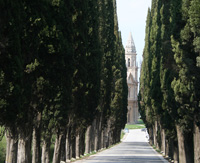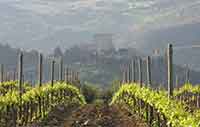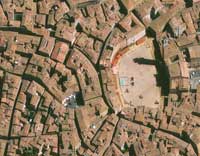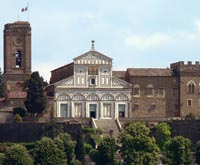| The Abbey of Sant’Antimo |
 |

| 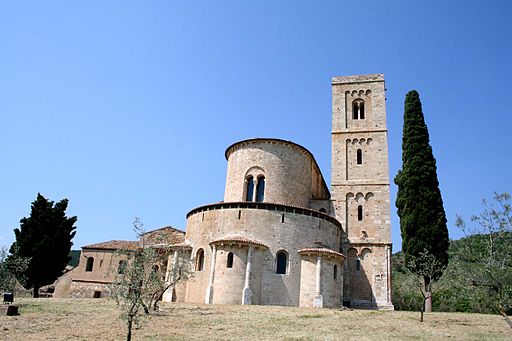 |
||
L'Abbazia di Sant'Antimo (Montalcino)
|
L'Abbazia di Sant'Antimo | L'Abbazia di Sant'Antimo, Apsis | ||
 |
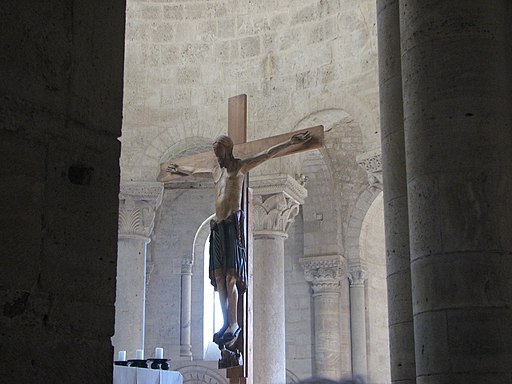 |
 |
||
Abbazia di Sant'Antimo - 42 - Il presbiterio visto dal matroneo
|
L'Abbazia di Sant'Antimo, il crocifisso dell'altare maggiore
|
L'Abbazia di Sant'Antimo, il crocifisso dell'altare maggiore |
||
 |
 |
 |
||
Il crocifisso e gli affreschi visti dal matroneo
|
||||
 |

|  |
||
| Giochi di luce sul soffitto | L'Abbazia di Sant'Antimo, giochi di luce sul soffitto
|
|||
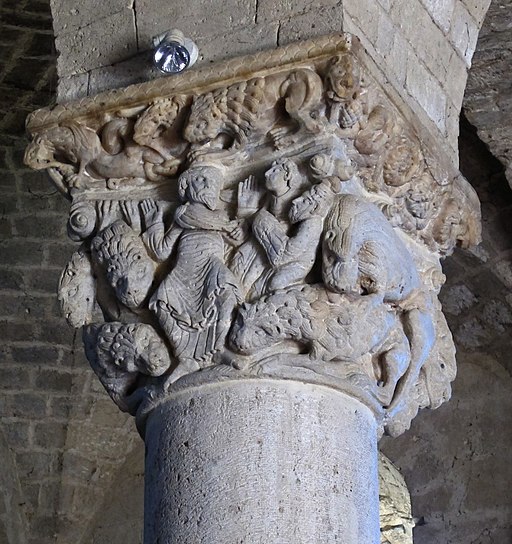 |

|  |
||
Abbazia di Sant'Antimo, capitello con San Daniele nella fossa dei leoni,i del Maestro di Cabestany
|
L'Abbazia di Sant'Antimo, Archi del matroneo
|
La navata destra | ||
|
||||
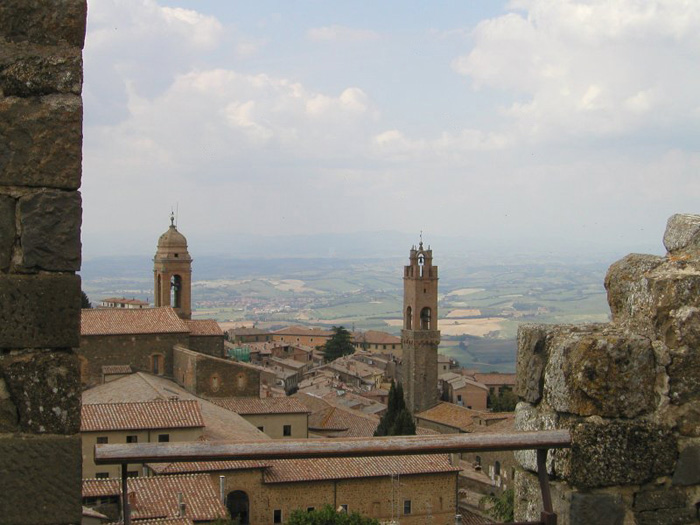 |
||||
Montalcino [1]
|
||||
Montalcino
|
||||
To the south of Siena is a classic fairytale hilltop town, set within a full circle of fortified walls and watched over by a mighty castle of medieval perfection. Montalcino, west of Pienza, is a beautiful village immersed in the breathtaking Val d'Orcia Natural Park, renowned all over the world for the production of its precious Brunello red wine.
Montalcino received the Italian Orange Flag award for sustainable tourism. The town has scarcely changed in appearance since the 16th century. Once you get up to the town, a magnificent spectacle unfolds for your eyes: rolling sunny hills dotted with yellow and red flowers, ancient oak trees, picturesque olive groves, scenic country roads winding through perfect vineyards and isolated cypress trees atop hills. The fortress has remained practically intact since the Middle Ages and often becomes the special setting for festivals, concerts, and events, such as the famous Jazz & Wine Festival held in July each year. Another landmark of Montalcino is the tall and slender clock tower that graces the Palazzo dei Priori, the city's town hall, while below lies the main square known as Piazza del Popolo with its characteristic Gothic loggia. Also worth visiting are the Palazzo Vescovile and the churches of Sant' Agostino, Sant' Egidio and San Francesco. The Museo Civico e Diocesano d’Arte Sacra, (Via Ricasoli 31, ust off Piazza Sant’Agostino) occupies a former monastery. The museum houses 14th- to 16th-century Sienese paintings, among which Madonna with Child by Simone Martini's workshop, Madonna with Child by Luca di Tommè, paintings by Giovanni di Paolo, Sano di Pietro and the grand polyptych of the Coronation of the Virgin Mary and the Stories from her Life by Bartolo di Fredi; a collection of painted wooden sculptures; a number of 17th-century paintings and sculptures, and a collection of works by Arturo Luciani (1861-1936). In addition, 16th- and 17th-century church vestments and gold-work, and a collection of 52 majolica jugs and local artifacts which may be dated between the end of the 13th century and the beginning of the 14th century. Montalcino’s fame derives from its production of one of Italy’s finest red wines known as Brunello di Montalcino. Brunello, roughly translated as "nice dark one" in the local dialect, is the unofficial name of the clone of Sangiovese (also known as Sangiovese Grosso grown in the Montalcino region. Brunello di Montalcino was Italy's first wine to be accorded D.O.C.G. status Wines in Tuscany | Brunello di Montalcino |
|
|||
Sant'Angelo in Colle is tiny but beautiful medieval village, 8 km souoth of Montalcino and |
||||
San Quirico d’Orcia |
||||
| San Quirico d’Orcia is situated on a hill slope between the Orcia river and the Tuoma torrent valley. Getting into San Quirico, walking from north through the Dante Alighieri street, you can find the Collegiata Church, a spended building from the XII century. Near the Church you can find the Palazzo Chigi, that hosts now the municipal building, built in the XVII century, Inside the palazzo there are a lot of beautiful wall paintings and at the first floor it hosts the Italian Garden Archive. In front of it you can find the Palazzo Pretorio, where the Natural Artistic and Cultural Park of Val d’Orcia comitee is located. Walking towards south you'll hit the Piazza della Libertà, San Quiricos' main square, with the San Francesco Church and the Porta Nuova, the ancient access to the village. In the same square there are Horti Leonini , a typical garden from the XVI century. During the summer there are a lot of cultural activities in it, such as the “Forme nel Verde”, an important international sculpture exhibition. |
||||
The Val d’Orcia Unesco Worldwide Humanity Heritage
|
||||
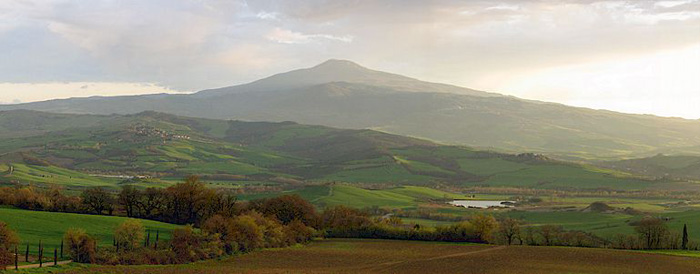 |
||||
The Val d'Orcia between Pienza and Monte Amiata, view to the west from La Foce. The territory of the Val d'Orcia is made up, mainly of a hilly landscape with gently rolling hills and valleys typical of the Sienese Crete and a rich variety of vegetation. |
||||
Camigliano, Castelnuovo dell'Abate, S.Angelo in Colle, S. Angelo Scalo, Torrenieri and Tavernelle are frazioni of Montalcino. |
||||
|
||||
 |
||||
Podere Santa Pia, situated in a particularly scenic valley, which overlooks on the hills around Cinigiano, up to Montecristo and Corsica
|
||||
The Maremma is a large area in southern Tuscany. It is a perfect microcosm that stretches between the provinces of Livorno and Grosseto. In the Divine Commedy, Dante Alighieri identified its borders from "Cecina to Corneto" (Tarquinia in Lazio). Maremma is unique because of the variety of its territory: blue sea, long beaches, black rock, hills covered with woods, marshes and flat lands, green hills and natural thermal baths.
|
||||
Cortona, Santa Maria de Nuova |
Orvieto, Duomo |
Montalcino |
||
Podere Santa Pia is located 3 km from Castigliocello Bandini, 15 km from Abazziia San 't Antimo and Montalcino, and 1 hour away from the seaside and close to art cities like Siena, Pienza, Montepulciano and San Quirico d'Orcia.
|
||||
|
||||
| If you have time leave your car up in Montalcino and walk down to the abbey. You can take the bus back to Montalcino from Castelnuovo dell'Abate. There is a hiking trial from ant'Antimo which takes you up into the woods towards Montalcino. The trail is well marked - it goes to your right from the main pathway to the church, just before you turn left to go to the church. Both times we were there we walked out along the trail for about 30 minutes, then walked back, but you can walk all the way to Montalcino. You get some lovely views of the church and the valley along the trail. The Blue Guide also mentions the town of Sant'Angelo in Colle, 6km from Sant'Antimo, as being an "enchanting well-preserved village on the top of a hill ... contained in its circle of walls". You can drive there on a white road (dirt road) from Sant'Antimo or on a paved road from Montalcino. |
|
|||
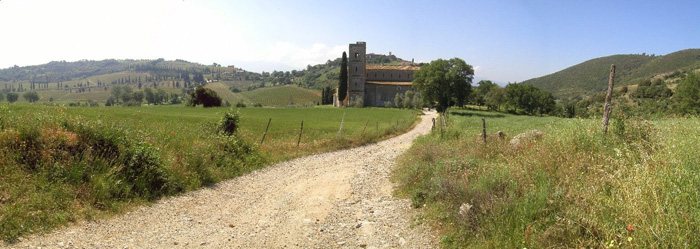 |
||||
Nearby the town of Sant’Angelo in Colle, 6km from Sant’Antimo, an enchanting well-preserved village on the top of a hill contained in its circle of walls. You can drive there on a dirt road from Sant’Antimo or on a paved road from Montalcino. |
||||
Walk around Pienza | Montepulciano - Pienza Walk around Pienza |
||||
| The trail starts on the Piazza Dante Alighieri in Pienza, and continues along the Viale Santa Caterina that leads to the Pieve di Corsignano, an exceptional example of Romanesque art just outside of the city walls of Pienza. Admire the carvings on the side of this ancient structure, which dates possibly from the 10th century. This was Pienza's original parish church. Follow the paved path beyond this beautiful Romanesque church, first along a derelict farm, then along the where you are right on a paved road to the intersection with the road San Quirico d'Orcia - Pienza. Walk in the direction of Pienza and turn right after about 10 minutes. The path runs downhill to Podere Arpicella. Turn left, and beyond a medieval tower, you can walk right back to Pienza (Viale Santa Caterina). Make time to visit the Romanesque Pieve di Corsignano, half a kilometre out of Pienza, along Via Fonti from Piazza Dante Alighieri. The Pieve di Corsignano dates from the 10th century and boasts a strange circular bell tower. There are no regular visiting times but the church is usually open.
Montepulciano - Pienza | 11 km, 3 hours
|
|
|||
Monte Cucco wine region |
Siena, Piazza del Campo |
Florence, San Miniato al Monte |
||
Maps and descriptions available in Podere Santa Pia Kompass map 653 Pienza - Montalcino - Monte Amiata (1:50.000)
|
||||
|
||||
This page uses material from the Wikipedia articles Abbey of Sant'Antimo, Montalcino, published under the GNU Free Documentation License. |
||||

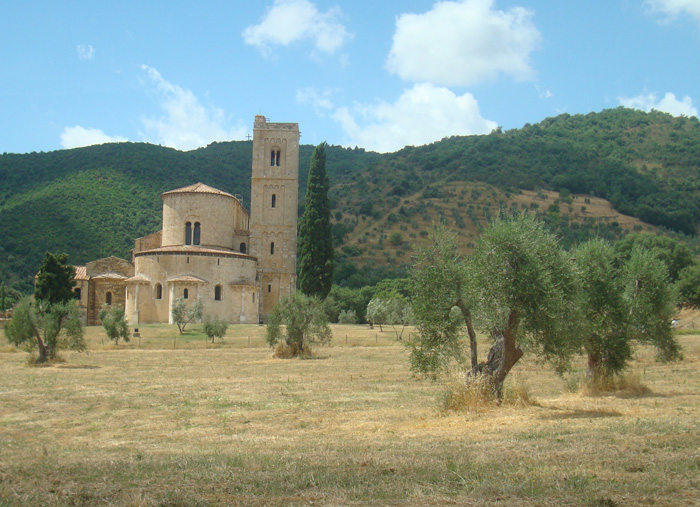
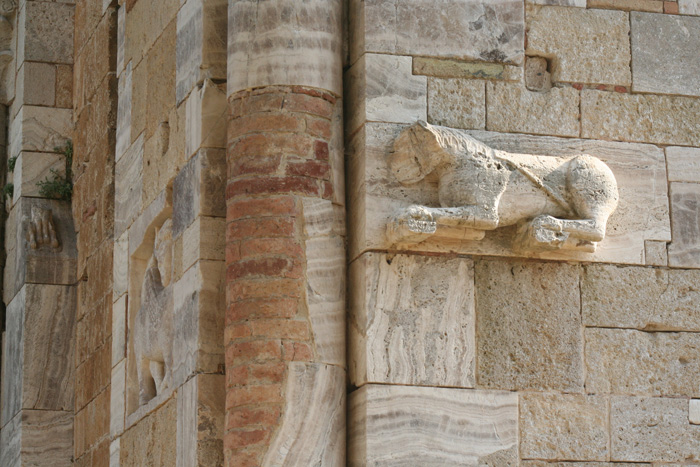
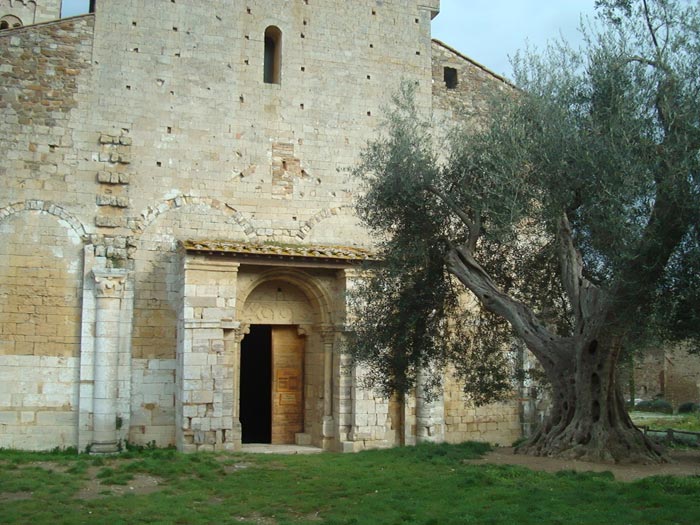
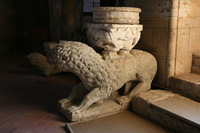
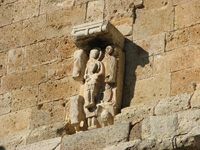
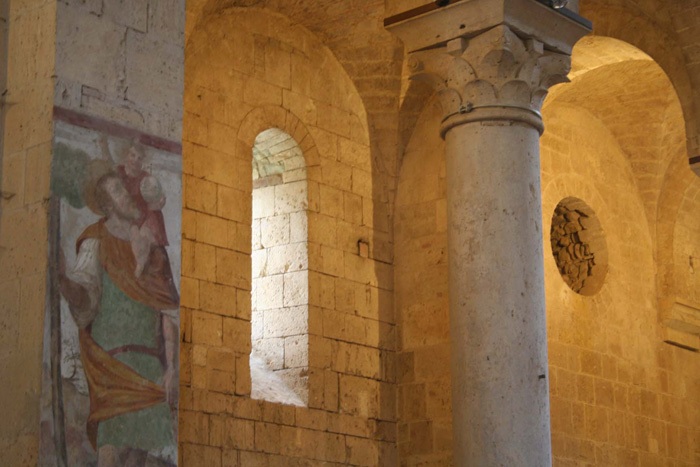
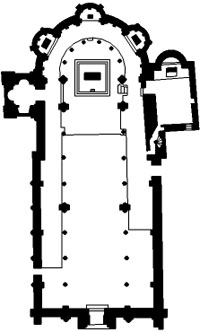
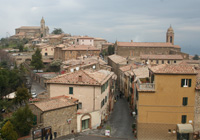
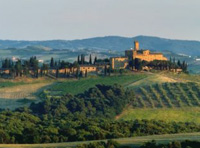 Banfi, Castello di Poggio alle Mura, view from Podere Santa Pia
Banfi, Castello di Poggio alle Mura, view from Podere Santa Pia 
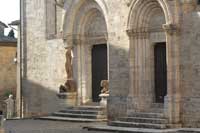
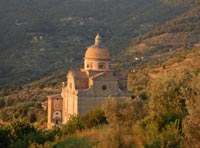
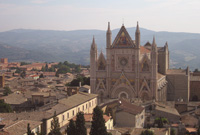
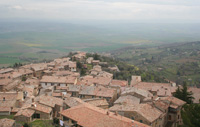
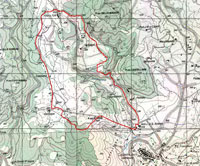
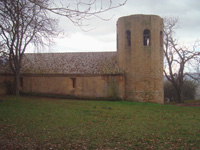 Pieve di Corsignano
Pieve di Corsignano 